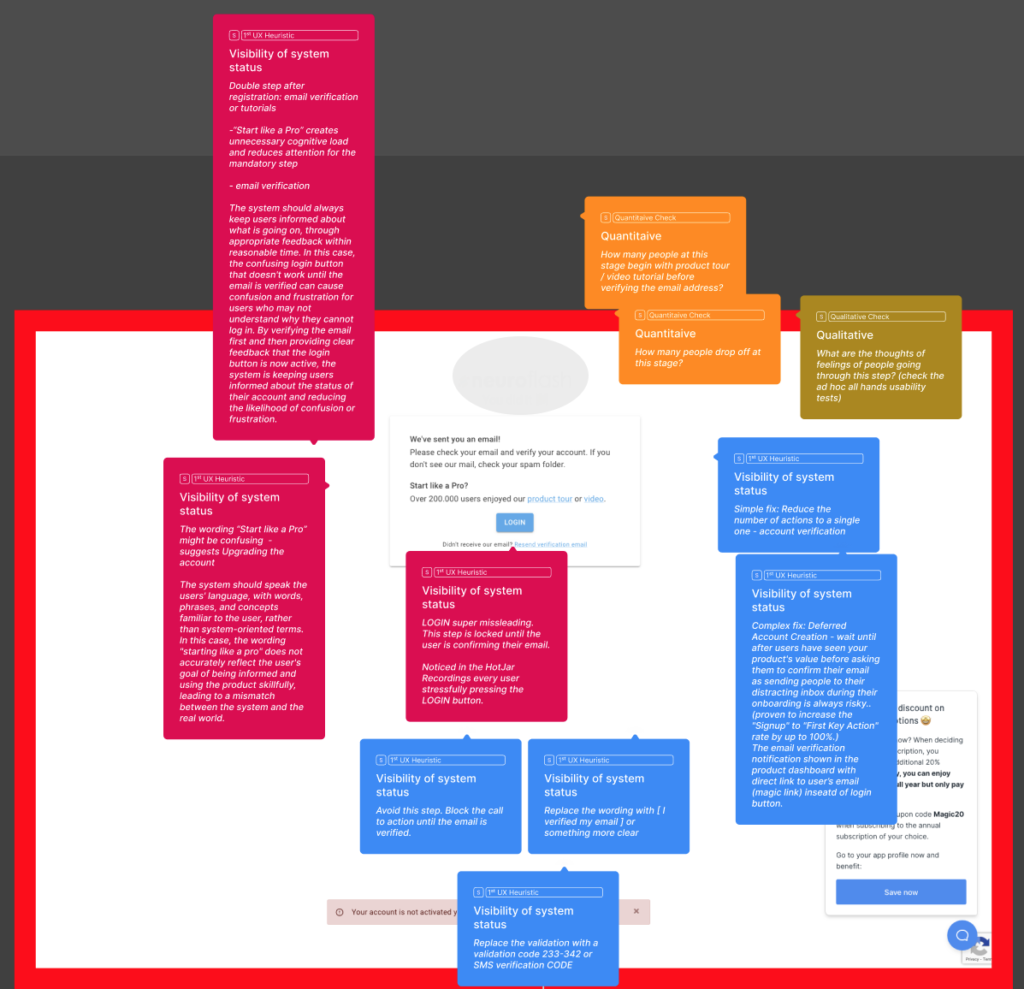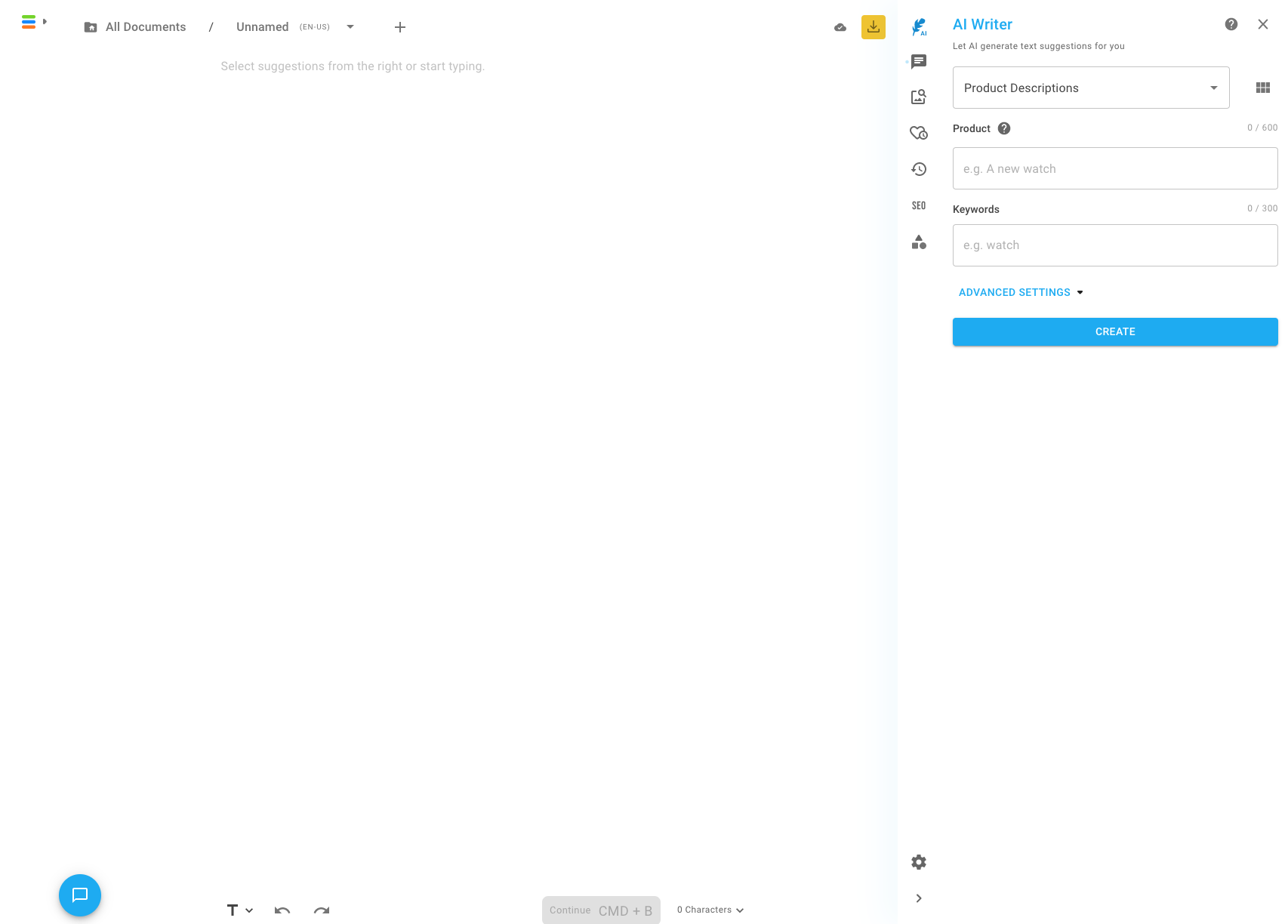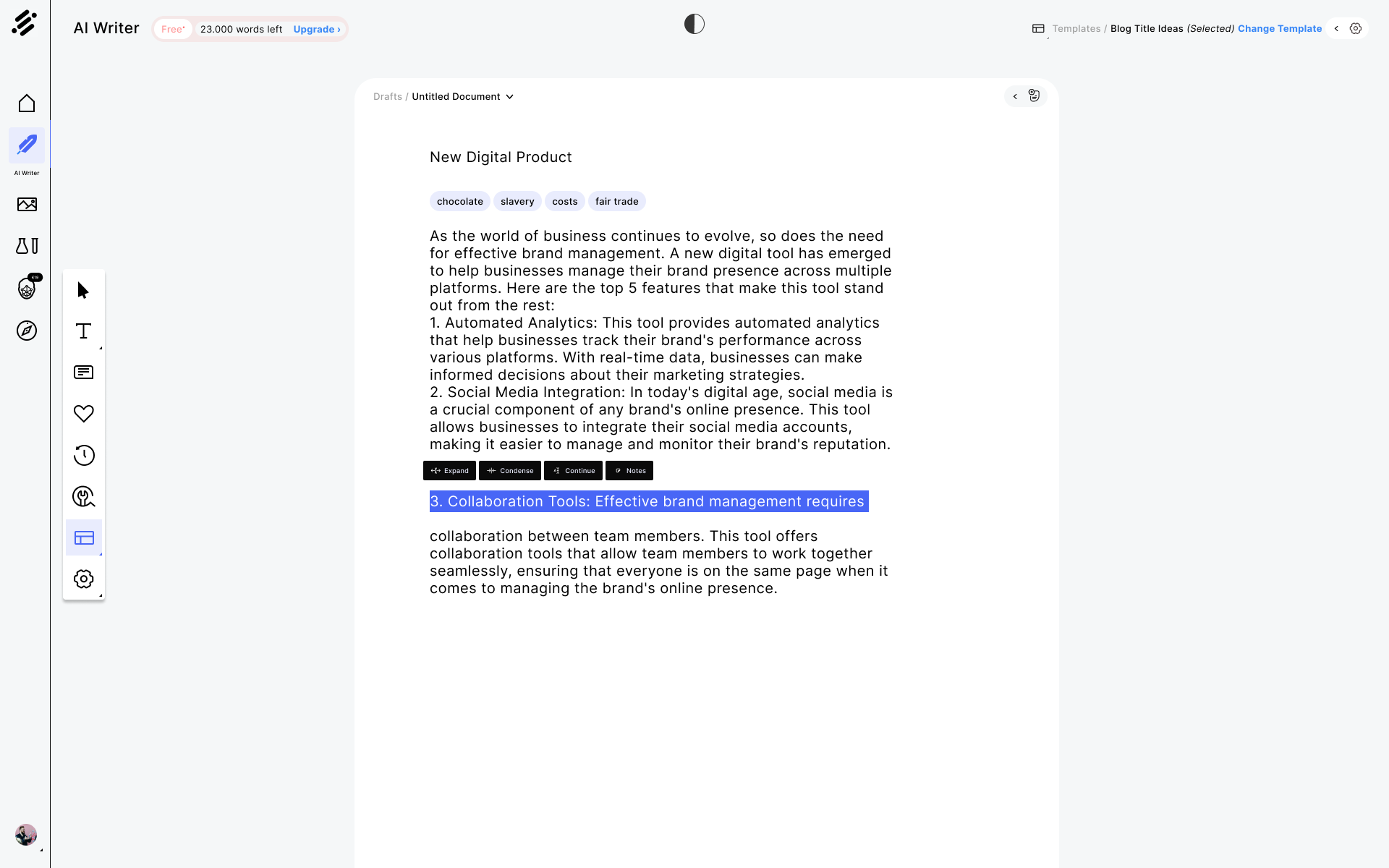The client, neuroflash, is a cutting-edge content creation platform that harnesses the power of artificial intelligence to help writers generate impactful and engaging text effortlessly.
By offering a diverse range of tools and features tailored to marketers, authors, and content creators, the platform aims to revolutionize the way people collaborate with AI to craft compelling narratives and enhance their writing experience.
The scope
-
Client: neuroflash, AI writing assistant
- Timeframe: 2 weeks (full-time, remote)
-
My Role: UX Designer
-
Methods: UX Audit, Heuristic Analysis, Competitor analysis, High Fidelity Prototyping
-
Tools: Hotjar, Google Analytics, Typeform, Miro, Figma
The context
Overview
A cutting-edge content creation platform envisioned a future where writers and AI would work together seamlessly, crafting exceptional content. To bring this dream to life, the platform needed to revolutionize its user experience (UX) by creating a truly inspired and engaging environment that would delight users and encourage long-term loyalty. A thorough UX audit was conducted, resulting in a creative and impactful UX transformation.
Challenge
The challenge lay in reimagining the platform’s UX from the ground up, identifying the core elements that would spark inspiration and create a sense of wonder for users. This required an exceptional level of empathy, creativity, and storytelling prowess to uncover the hidden potential within the platform and propose innovative solutions that would resonate with users.
Approach
The journey to uncover the platform’s inspiring UX potential included:
- Empathetic User Surveys: Delved deep into users’ thoughts, feelings, and aspirations to understand their desires and pain points.
- Insightful Google Analytics: Analyzed user behavior to uncover hidden patterns and opportunities for inspiration.
- Revealing Hotjar Recordings: Observed user sessions, identifying moments of frustration and opportunities for delight.
- Internal Team Usability Walkthroughs: Encouraged team members to step into users’ shoes and share their experiences.
- Heuristic Evaluation: Evaluated the platform through the lens of Jakob Nielsen’s 10 general principles for interaction design.
- Competitive Analysis: Explored the world of content creation platforms to uncover best practices and innovative approaches.
Enlightening Insights
- Learning Curve: Users require guidance in the form of instructional videos, onboarding processes, and FAQs to master the platform.
- Toolbar Discoverability: Valuable in-text features in the toolbar are often overlooked by users.
- Churn Reasons: Usability issues are not the primary cause for users leaving the platform.
- Frustration Moments: Hotjar recordings reveal numerous instances of user confusion and frustration.
- Incremental Improvements: Small usability updates can significantly enhance the user experience.
Recommen
-dations
Based on the insights, the following recommendations and accompanying visuals were proposed:
1. Onboarding Transformation:
Design an engaging onboarding journey that guides users through the platform’s features and functionalities, helping them become proficient quickly. The screen below illustrates the design feedback given based on heuristic analysis.

2. Toolbar Revelation:
Make the toolbar’s in-text features more prominent and intuitive, allowing users to easily discover and utilize them.


3. Personalization and Customization:
Offer personalization and customization options for premium users, fostering a sense of connection and loyalty to the platform.
Examples of solutions that I provided were:
- Personalization: Users can save preferences such as content type, industry, target audience, and brand tone of voice for a frictionless experience and an easy way to complete the job.
- Customization: Modular tone of voice features allow users to save specific words or phrases in their brand language, ensuring that the generated text is on-point every time, which can lead to customer retention.
4. Address Frustration Moments
Identify and address instances of user frustration by improving design elements and offering contextual assistance when needed. The example below demonstrates the solutions that have been proposed to reduce the time it takes for a user to select a template on the platform.

5. Continuous Exploration and Innovation
Monitor usability regularly and conduct usability studies to maintain an evolving and engaging user experience. Here I provided a list of possible future research directions.
- Research target audience and use cases for better UX design.
- Conduct usability study with super users, examining processes and feature usage.
- Perform card sorting or prioritization check for text editor features, and adapt UI accordingly.
- Investigate ChatGPT usability, identifying pain points in text creation (e.g., blog posts).
The Outcome
The outcome of the UX audit highlighted the importance of further user research, particularly in the areas of personas and use cases. It underscored the need for the team to adopt a more focused approach in feature implementation, aligning design decisions with the specific needs of their users rather than attempting to create a patchwork of features based on competitor offerings. This shift towards a user-centric focus allows the platform to deliver a more tailored and seamless experience, ultimately enhancing user satisfaction and long-term retention.
The case study demonstrates a thoughtful and data-driven approach to improving the platform’s UX, transforming it into a more engaging and user-friendly space for writers and AI to collaborate. By implementing these recommendations, the content creation platform can ensure user satisfaction and retention, ultimately leading to its continued success.